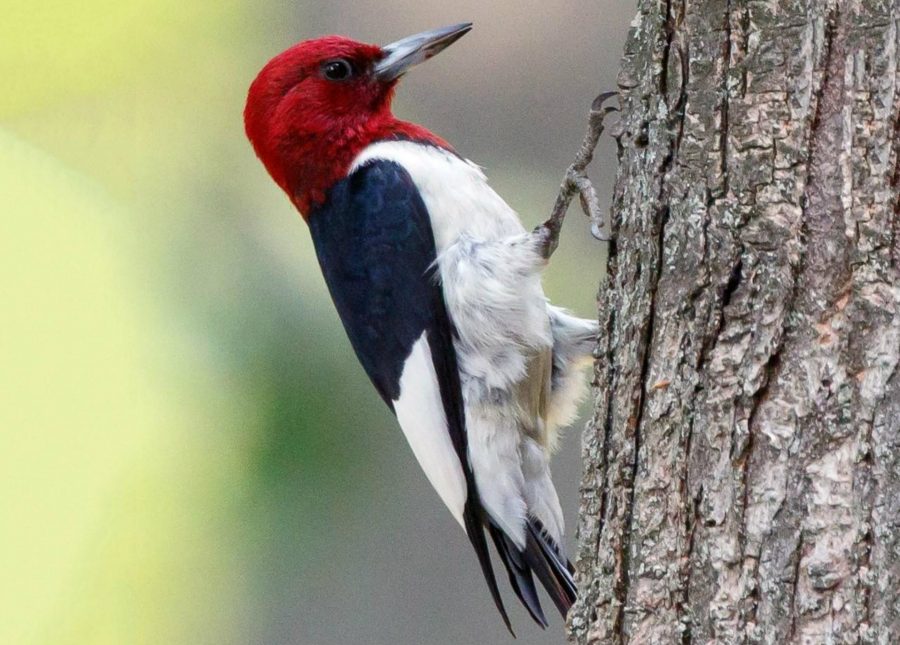
RED-HEADED WOODPECKER
Red-headed Woodpeckers are rare breeders in the county. They nest in locations like Point Pelee National Park and the area nearby. They are frequently seen at the Tip of the park during spring migration. A walk along the waterfront between the Leamington Marina and the ferry dock is a great place to look for this species in the summer, as they nest in some of the dead trees along the walkway.
The gorgeous Red-headed Woodpecker is so boldly patterned it’s been called a “flying checkerboard,” with an entirely crimson head, a snow-white body, and half white, half inky black wings. These birds don’t act quite like most other woodpeckers: they’re adept at catching insects in the air, and they eat lots of acorns and beech nuts, often hiding away extra food in tree crevices for later. This magnificent species has declined severely in the past half-century because of habitat loss and changes to its food supply.
Size & Shape
Red-headed Woodpeckers are medium-sized woodpeckers with fairly large, rounded heads, short, stiff tails, and powerful, spike-like bills.
Color Pattern
Adults have bright-red heads, white under parts, and black backs with large white patches in the wings, making the lower back appear all white when perched. Immatures have gray-brown heads, and the white wing patches show rows of black spots near the trailing edge.
Behaviour
In addition to catching insects by the normal woodpecker method of hammering at wood, Red-headed Woodpeckers also catch insects in flight and hunt for them on the ground. They also eat considerable amounts of fruit and seeds. Their raspy calls are shriller and scratchier than the Red-bellied Woodpecker’s.
Habitat
Red-headed Woodpeckers live in pine savannahs and other open forests with clear understories. Open pine plantations, tree rows in agricultural areas, and standing timber in beaver swamps and other wetlands all attract Red-headed Woodpeckers.
*Image and description were sourced from: allaboutbirds.org

